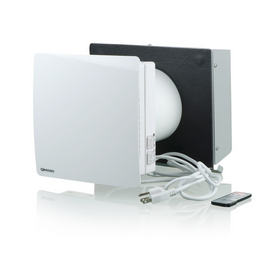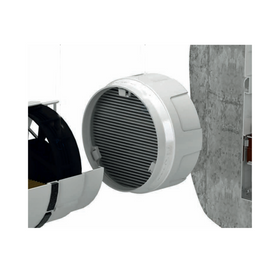
Pet Allergies? 9 Ways to Better Indoor Air Quality
Last Updated: Feb 23, 202568% of American households or almost 85 million families in America own a pet. While dogs, cats, and other types of pets play an important part in the family dynamic, some difficulties come with keeping a furry friend inside the home. From the challenges that come with potty training a pet to shedding that characterizes dog breeds like German Shepherds, animals can negatively affect the quality of the air you breathe. But do they have to?
With a bit of maintenance and prevention, it is possible to keep pets inside the home while simultaneously maintaining optimum indoor air quality.
Table of Contents
- How Pets Contribute to Deteriorating Indoor Air Quality
- How Many People Suffer from Pet Allergies?
- How to Mitigate Pet-Related Allergies
- 1. Don't Blame Pets for All Allergies
- 2. Limit the Spaces Where Your Pets Can Go
- 3. Keep Pets Away from Air Vents
- 4. Keep Pets Away from Carpets
- 5. Reduce Pet Allergies with a High-Quality Air Filtration Device
- 6. Protect Your Bedding
- 7. Bathe Your Pets on a Weekly Basis
- 8. Brush and Clean Your Pet Outdoors
- 9. Pet-related Allergy Treatments
- Bottom Line
How Pets Contribute to Deteriorating Indoor Air Quality
Pet dander is made up of minuscule particles of skin that are shed by animals with fur or feathers. It also is one of the leading causes of allergies in the United States, as pet dander contains a specific type of protein that can trigger allergic reactions. This protein is also found in the urine and saliva of many household pets, meaning that pets will often leave traces of this allergy-causing protein throughout your home. Every time your cat licks itself while bathing or your dog drools over its favorite toy, the protein is spreading throughout your home. This results in allergens floating in the air.
Since the protein molecules that cause allergies on cats are much smaller (1/10th the size of standard dust allergens), they tend to stay airborne for more extended periods of time. Thus, having cats inside the home often causes more severe allergies, though people with sensible allergies can also be affected by dogs.
While pet dander and saliva-based proteins are two common allergens, homes with birds such as parakeets, cockatiels, or parrots, should also be concerned about another allergen. Pet birds regularly harbor mites that live on their feathers and feed off of the dander they produce. Dust mites are another severe problem that affects indoor air quality and is closely related to having birds in the home.
How to Mitigate Pet-Related Allergies
If someone in your household suffers from pet-related allergies, you do not necessarily need to get rid of your furry companions. Below, we look at four things you can do to maintain optimum indoor air quality for pet-loving homes.
1. Don't Blame Pets for All Allergies
First things first, many allergy sufferers are not only allergic to pets. If someone in your home suffers from allergies, it's essential to receive a professional proper diagnosis. Understanding allergy sufferers' sensitivities is an essential first step.

2. Limit the Spaces Where Your Pets Can Go
Limiting the space where your dog or cat can roam throughout the home is one strategy to limit your exposure to allergens. In homes where a shedding dog can sleep on the couch in the morning, the kitchen in the afternoon, and your bed in the evening, the spread of allergens will be significantly higher. The pet protein that causes allergies has a unique ability to attach to household materials. A dog or cat that has free range throughout the home means that you will have that protein embedded in every area of the house.
If you were to keep your dog or cat confined to specific rooms or areas, it would be much easier to keep that area of your home clean and rid of the potential allergens.
3. Keep Pets Away from Air Vents
One of the worst things you can do is to place your cat’s litter box or your dog’s bedding in front of an air vent. The blowing air will capture some of the pet dander and allergy-causing proteins and blow it throughout your home. Instead, keep your pet’s private space in corners where airflow is minimal and where you can easily clean regularly.

6. Protect Your Bedding
If you absolutely cannot stand the idea of not letting your dog or cat into your bedroom, make sure to cover your mattress with an allergen-proof mattress protector such as this one offered by Linenspa. These inexpensive covers can protect your mattress and pillows from getting permeated by pet dander and allergens.
Tobias Roberts
Tobias runs an agroecology farm and a natural building collective in the mountains of El Salvador. He specializes in earthen construction methods and uses permaculture design methods to integrate structures into the sustainability of the landscape.













